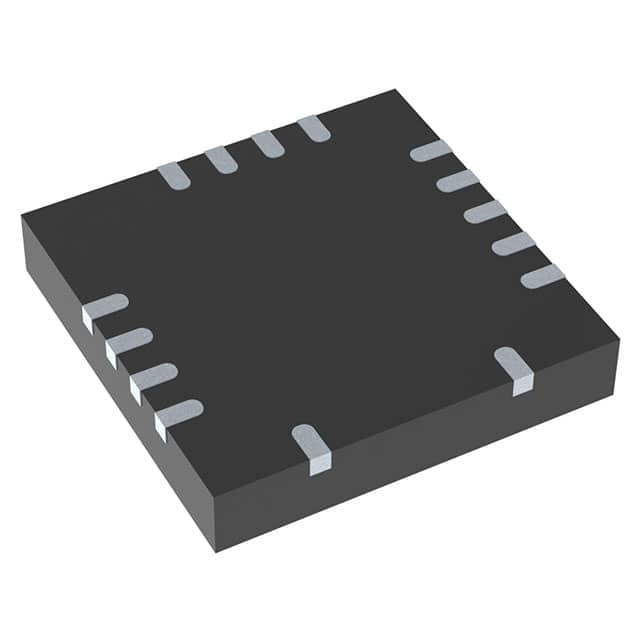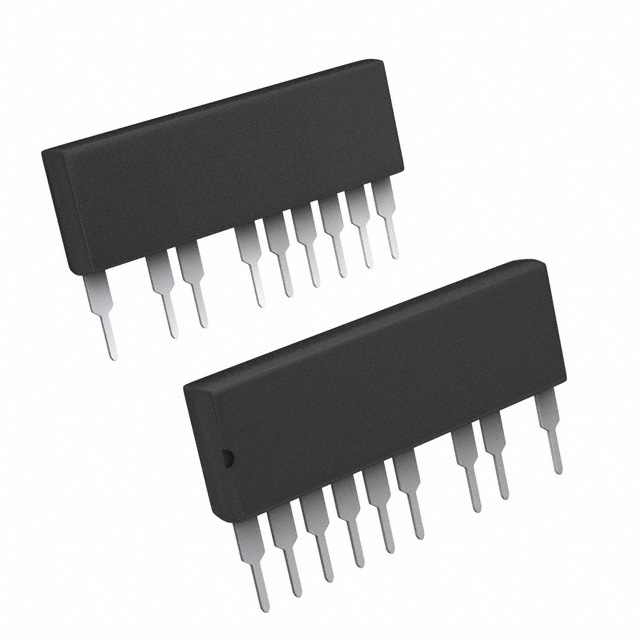Ⅰ. PMIC - Gate Drivers
Ⅱ. Physical Characteristics of PMIC - Gate Drivers
Ⅲ. Electrical Characteristics of PMIC - Gate Drivers
A PMIC (Power Management Integrated Circuit) gate driver is a specialized component integrated into PMICs that provides efficient and precise control of power semiconductor devices such as MOSFETs (Metal-Oxide-Semiconductor Field-Effect Transistors) and IGBTs (Insulated-Gate Bipolar Transistors). Gate drivers play a critical role in driving the gates of these devices, enabling efficient power switching and control. Let's explore the introduction to PMIC gate drivers in more detail:

1.Gate Drive Function: PMIC gate drivers are responsible for generating the necessary voltage and current levels required to drive the gates of power semiconductor devices. They ensure that the devices switch on and off rapidly, controlling the flow of current and facilitating efficient power conversion. Gate drivers provide the necessary electrical signals to activate the power devices and regulate their operation.
2.Voltage Level Shifting: Gate drivers within PMICs often include voltage level shifting capabilities. Since power semiconductor devices typically require higher voltage levels at their gates than the control signals provided by the low-voltage circuitry, gate drivers perform the function of shifting the input logic level to the higher voltage levels required for proper device operation. This voltage level shifting ensures compatibility between the low-voltage control signals and the higher voltage requirements of the power devices.
3.Current Amplification: PMIC gate drivers typically incorporate current amplification stages to provide sufficient gate drive current to the power semiconductor devices. These stages amplify the control signal current to the levels required to quickly charge and discharge the gate capacitances of the power devices, facilitating fast switching and reducing power losses. The gate driver's current amplification capability ensures efficient and reliable operation of the power devices.
4.Protection Features: Gate drivers integrated into PMICs often incorporate protection features to safeguard the power devices and the driver circuitry. These features may include overvoltage protection, undervoltage lockout, overcurrent protection, and thermal shutdown. Protection mechanisms help prevent device failures, ensure safe operation, and enhance system reliability in the event of fault conditions or abnormal operating conditions.
5.Dead Time Control: PMIC gate drivers commonly offer dead time control functionality. Dead time refers to the brief interval between the turn-off of one power device and the turn-on of the complementary power device in a half-bridge or full-bridge configuration. Proper dead time control prevents simultaneous conduction, minimizing shoot-through currents and potential damage to the power devices. Dead time control within gate drivers improves overall system efficiency and protects against harmful electrical transients.
6.Control and Communication Interfaces: PMIC gate drivers may provide control and communication interfaces for configuration and monitoring purposes. These interfaces can include I2C (Inter-Integrated Circuit), SPI (Serial Peripheral Interface), or other proprietary protocols. They allow for device-specific configuration, fault detection, and control of various parameters, enhancing flexibility and ease of integration within the overall system.
PMIC gate drivers find widespread use in various power management applications, including motor control, power converters, inverters, and other high-power applications. They offer efficient power switching and control, protection features, and flexibility in driving power semiconductor devices.
When selecting a PMIC with integrated gate drivers, it is crucial to consider the specific requirements of the power semiconductor devices, including voltage levels, gate capacitances, current ratings, and compatibility with the targeted system. Consulting the datasheet and technical documentation provided by the PMIC manufacturer is essential to understanding the detailed specifications and ensuring compatibility with the targeted power system.
Physical Characteristics of PMIC - Gate Drivers
The physical characteristics of PMIC (Power Management Integrated Circuit) gate drivers can vary depending on the specific implementation and manufacturer. However, here are some general considerations regarding the physical characteristics of PMIC gate drivers:
1.Package Type: PMIC gate drivers are typically packaged as part of the PMIC itself. The package type can vary, including options such as quad flat no-leads (QFN), ball grid array (BGA), small outline integrated circuit (SOIC), or flip-chip packages. The package type determines the external dimensions, pin count, and thermal characteristics of the component.
2.Size: The size of PMIC gate drivers can vary based on the complexity and functionality of the integrated circuits. Miniaturization is a common trend, and these components are designed to be compact to fit within the overall PMIC package. The size of the package contributes to the space efficiency and overall form factor of the PMIC.
3.Pin Count: PMIC gate drivers have a certain number of pins that provide electrical connections for power inputs, gate drive outputs, control signals, and communication interfaces. The pin count depends on the specific functionality and requirements of the gate driver. It is important to consider the pin count when designing the PCB layout and ensuring compatibility with the PMIC and the overall system.
4.Thermal Considerations: PMIC gate drivers, like other power management components, generate heat during operation. Effective thermal management is crucial to ensure reliable performance and prevent overheating. Thermal considerations may involve incorporating thermal pads or exposed heat sinks on the package, using additional thermal solutions like heat sinks or thermal vias on the PCB, or adhering to specific thermal guidelines provided by the manufacturer.
5.Mounting: PMIC gate drivers are typically mounted on the PCB using surface-mount technology (SMT). They are soldered onto the PCB using reflow soldering techniques. The specific mounting method depends on the package type and manufacturer recommendations. Proper mounting and soldering techniques are essential to ensure reliable electrical connections and proper functioning of the components.
6.Markings and Labels: PMIC gate drivers may have markings and labels on the package, providing information such as the manufacturer's logo, part number, date codes, and pin identification. These markings aid in identification, differentiation, and proper usage of the components.
It's important to note that the specific physical characteristics of PMIC gate drivers can vary based on the manufacturer, product family, and application requirements. When selecting a PMIC with integrated gate drivers, it is crucial to consult the datasheet or technical documentation provided by the manufacturer for detailed specifications and information on the physical characteristics of these components within a specific PMIC.

Electrical Characteristics of PMIC - Gate Drivers
The electrical characteristics of PMIC (Power Management Integrated Circuit) gate drivers define their functionality and performance in driving power semiconductor devices. While the exact electrical specifications can vary depending on the specific implementation and manufacturer, here are some general electrical characteristics to consider:
1.Input Voltage Range: PMIC gate drivers have a specified input voltage range within which they can operate effectively. This range indicates the acceptable voltage levels at the input side of the gate driver. It is important to ensure that the input voltage falls within the specified range to ensure proper operation and avoid potential damage to the gate driver.
2.Gate Drive Voltage: Gate drivers within PMICs generate the gate drive voltage necessary to turn on and off power semiconductor devices. The gate drive voltage is typically higher than the control signal voltage provided to the gate driver. The gate drive voltage requirements depend on the specific power devices being driven and their threshold voltage requirements.
3.Output Current: PMIC gate drivers provide the necessary output current to drive the gates of power semiconductor devices. The output current capability of the gate driver should be sufficient to quickly charge and discharge the gate capacitances of the power devices, facilitating fast switching and reducing power losses. The gate driver's output current should match the requirements of the power devices being driven.
4.Rise and Fall Times: The rise and fall times of a gate driver refer to the time it takes for the output voltage to transition between high and low levels. Fast rise and fall times are desirable as they enable quick switching of power devices, reducing switching losses and improving overall system efficiency.
5.Delay Times: PMIC gate drivers may have specified delay times that represent the time it takes for the gate driver to respond to a control signal and switch the power devices accordingly. Delay times can impact the timing and synchronization of power switching operations, and it is important to consider them for proper system operation.
6.Protection Features: Gate drivers integrated into PMICs often incorporate protection features to safeguard the power devices and the driver circuitry. These features can include undervoltage lockout (UVLO), overvoltage protection (OVP), overcurrent protection (OCP), and thermal shutdown. These protection mechanisms help prevent device failures and ensure safe operation in various operating conditions.
7.Control and Communication Interfaces: PMIC gate drivers may provide control and communication interfaces for configuration and monitoring purposes. These interfaces can include I2C (Inter-Integrated Circuit), SPI (Serial Peripheral Interface), or other proprietary protocols. They allow for device-specific configuration, fault detection, and control of various parameters, enhancing flexibility and ease of integration within the overall system.
It's important to note that the specific electrical characteristics of PMIC gate drivers can vary based on the manufacturer, product family, and application requirements. When selecting a PMIC with integrated gate drivers, it is crucial to consult the datasheet or technical documentation provided by the manufacturer for detailed electrical specifications and ensure compatibility with the targeted power devices and system requirements.



